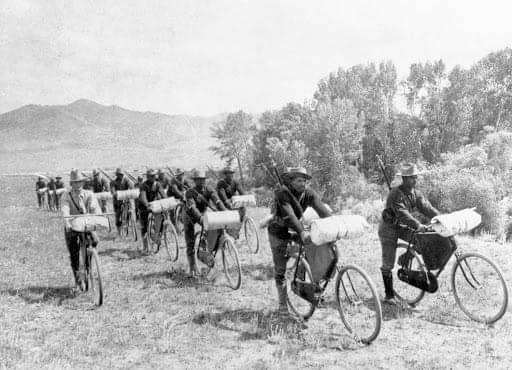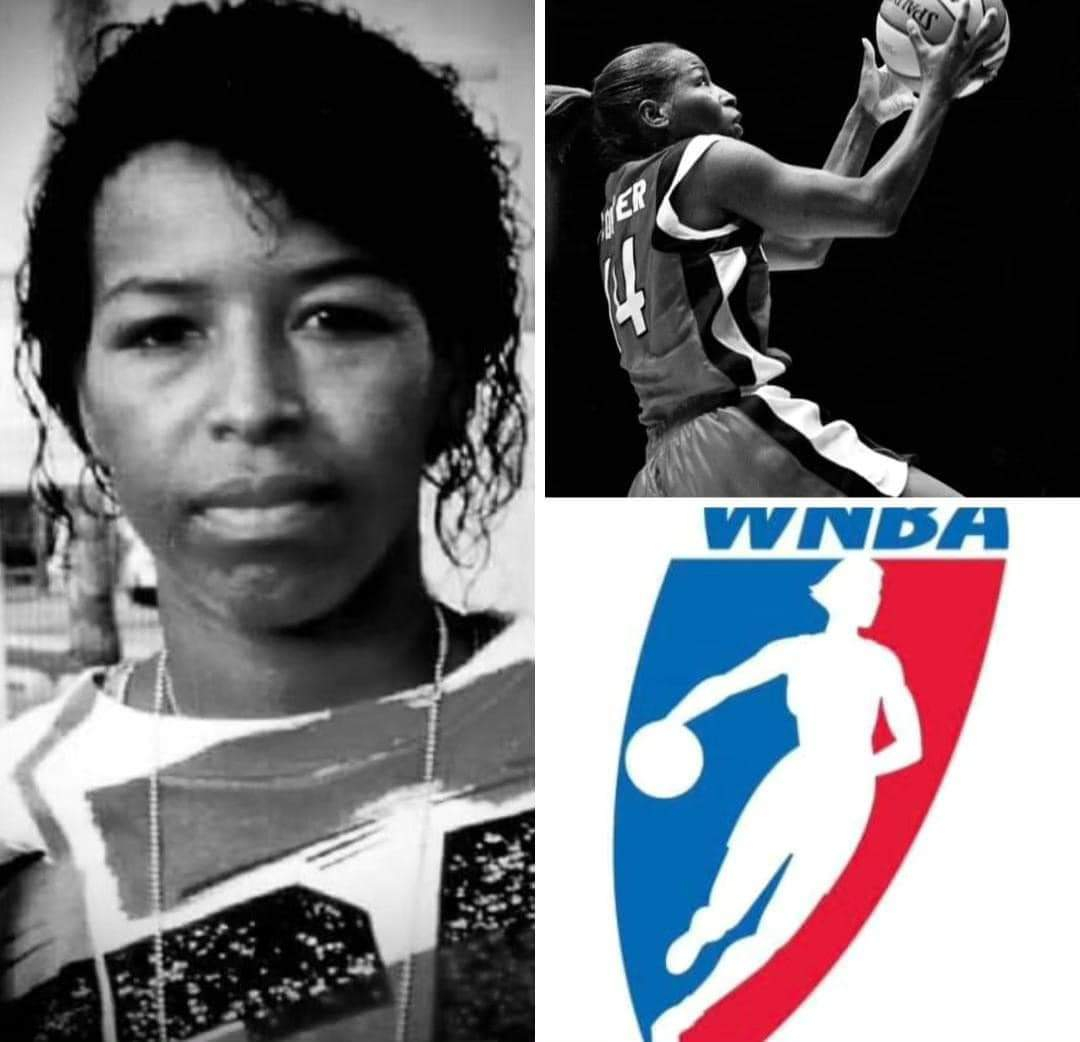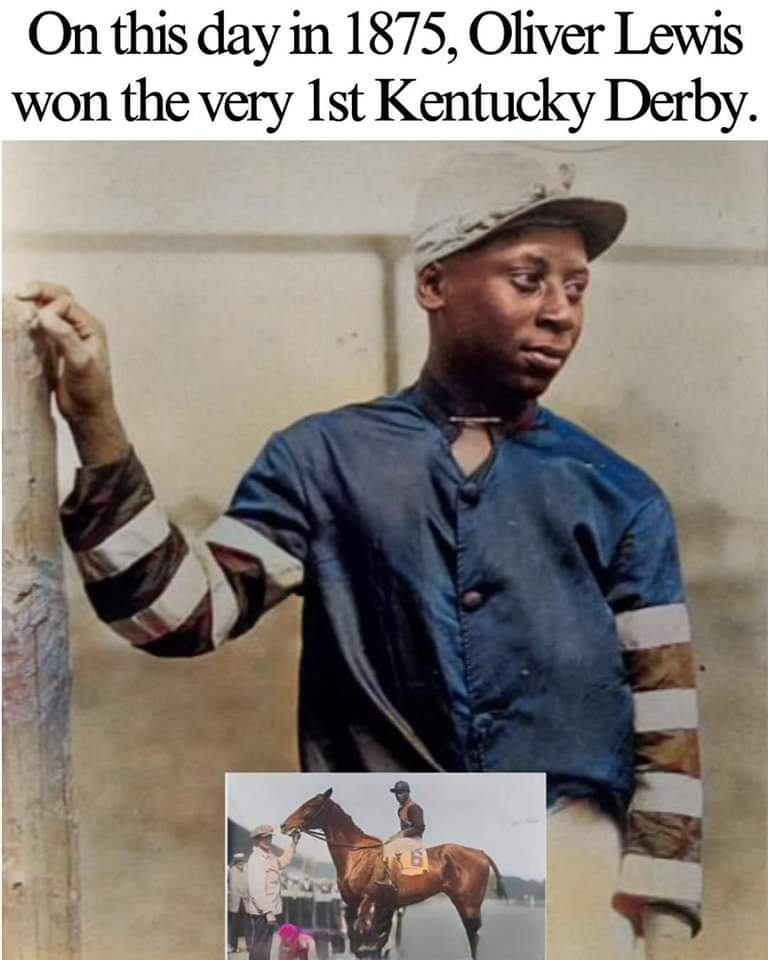0 Comentários
0 Compartilhamentos
79 Visualizações

Diretório
Conheça novas pessoas, crie conexões e faça novos amigos
- Faça Login para curtir, compartilhar e comentar!
- 1897: African American Buffalo Soldiers test bikes for Army on 1,900 mile expedition
In 1897, 20 soldiers, an army surgeon and a reporter led by Lt. James A. Moss, rode bicycles from Fort Missoula in Montana to St. Louis, Missouri. The trip was made as an experiment to see whether the bicycle could serve a useful purpose in the Army.
1890s America was also experiencing a bicycle-craze due to the recent invention of the "safety bicycle" (a bicycle with wheels of equal size and chain driven). Accounts make it clear that Moss had a romantic streak, and enjoyed the outdoors, as well as what he referred to as "the poetry of cycling".
The 41-day journey to St. Louis was 1,900 miles and took the men through Montana, Wyoming, South Dakota, Nebraska and Missouri. In the 1890s, the Army was segregated, with most black units (a.k.a "Buffalo Soldiers") serving in the isolated outposts in the West. Fort Missoula, at that time, was home to the 25th Infantry, a black regiment. Moss was a Southerner and recent graduate of West Point. He was only twenty-five years old. He and some of the '97 riders had done trips before. In the summer of 1896, eight of them rode first to the Mission Mountains, north of Missoula and then Yellowstone Park. For the St. Louis trip, Moss picked a path that mostly followed the railroads -- the Northern Pacific to Billings and then various arms of the Burlington the rest of the way.
Fortunately, Eddie Boos, a nineteen-year-old, rode along with the Corps to St. Louis and wired lengthy reports to the local Missoula paper, as well as newspapers all over the United States.
Combining his accounts with those of Lt. Moss, we get a fairly detailed picture of the trip. Sadly, no accounts from the soldiers, themselves, are known to exist. We only know them through Boos and Moss's somewhat stereotyped descriptions. Nevertheless, what comes through is a group of highly dedicated, tough, resilient, men who at the end of a long, hard ride still had a keen sense of humor and enjoyment of life*. A year after the trip they proved their mettle as soldiers, securing key victories during the Spanish-American War. Boos tells us that the Corps was escorted by hundreds as they drew closer to the finish of their journey and were welcomed by over 10,000 upon reaching their goal in Forest Park in St. Louis.1897: African American Buffalo Soldiers test bikes for Army on 1,900 mile expedition In 1897, 20 soldiers, an army surgeon and a reporter led by Lt. James A. Moss, rode bicycles from Fort Missoula in Montana to St. Louis, Missouri. The trip was made as an experiment to see whether the bicycle could serve a useful purpose in the Army. 1890s America was also experiencing a bicycle-craze due to the recent invention of the "safety bicycle" (a bicycle with wheels of equal size and chain driven). Accounts make it clear that Moss had a romantic streak, and enjoyed the outdoors, as well as what he referred to as "the poetry of cycling". The 41-day journey to St. Louis was 1,900 miles and took the men through Montana, Wyoming, South Dakota, Nebraska and Missouri. In the 1890s, the Army was segregated, with most black units (a.k.a "Buffalo Soldiers") serving in the isolated outposts in the West. Fort Missoula, at that time, was home to the 25th Infantry, a black regiment. Moss was a Southerner and recent graduate of West Point. He was only twenty-five years old. He and some of the '97 riders had done trips before. In the summer of 1896, eight of them rode first to the Mission Mountains, north of Missoula and then Yellowstone Park. For the St. Louis trip, Moss picked a path that mostly followed the railroads -- the Northern Pacific to Billings and then various arms of the Burlington the rest of the way. Fortunately, Eddie Boos, a nineteen-year-old, rode along with the Corps to St. Louis and wired lengthy reports to the local Missoula paper, as well as newspapers all over the United States. Combining his accounts with those of Lt. Moss, we get a fairly detailed picture of the trip. Sadly, no accounts from the soldiers, themselves, are known to exist. We only know them through Boos and Moss's somewhat stereotyped descriptions. Nevertheless, what comes through is a group of highly dedicated, tough, resilient, men who at the end of a long, hard ride still had a keen sense of humor and enjoyment of life*. A year after the trip they proved their mettle as soldiers, securing key victories during the Spanish-American War. Boos tells us that the Corps was escorted by hundreds as they drew closer to the finish of their journey and were welcomed by over 10,000 upon reaching their goal in Forest Park in St. Louis.0 Comentários 0 Compartilhamentos 1131 Visualizações - The Best Player in WNBA History
Cynthia Cooper is regarded by many as the WNBA’s version of Michael Jordan. She was 34 years old when she made her pro debut in 1997. The WNBA was founded in 1996 and had its first game in 1997.
Cooper won the WNBA Regular Season MVP in 1997 and 1998, and she led the league in scoring three times in a row. The Houston Comets, led by Cooper, won the first four championships in WNBA history (1997, 1998, 1999, and 2000). Cooper was named the Finals MVP all four times.
After 4 Peating, Cooper retired in 2000. She coached the Phoenix Mercury for a year and a half before returning back to the Comets in 2003. Cooper finally retired for good in 2004.
She was very competitive and had a killer instinct like MJ had. And like MJ, Cooper was an elite two-way player (offense and defense).The Best Player in WNBA History Cynthia Cooper is regarded by many as the WNBA’s version of Michael Jordan. She was 34 years old when she made her pro debut in 1997. The WNBA was founded in 1996 and had its first game in 1997. Cooper won the WNBA Regular Season MVP in 1997 and 1998, and she led the league in scoring three times in a row. The Houston Comets, led by Cooper, won the first four championships in WNBA history (1997, 1998, 1999, and 2000). Cooper was named the Finals MVP all four times. After 4 Peating, Cooper retired in 2000. She coached the Phoenix Mercury for a year and a half before returning back to the Comets in 2003. Cooper finally retired for good in 2004. She was very competitive and had a killer instinct like MJ had. And like MJ, Cooper was an elite two-way player (offense and defense).0 Comentários 0 Compartilhamentos 503 Visualizações - In 1875, Oliver Lewis became the first jockey to win the Kentucky Derby, America's longest continuous sporting event. Lewis was born in 1856 in Fayette Country, Kentucky, to his parents Goodson and Eleanor Lewis. Lewis was born free, but there is little known about his parents or family. Lewis was only 19 years old when he entered the first Kentucky Derby. The race was held at what was then the Louisville Jockey Club on May 17, 1875, but is now known as Churchill Downs.
Ten thousand spectators watched this first race. Lewis rode a horse named Aristide, which was one of two colts entered by their owner, H. Price McGrath of Jessamine, Kentucky. The other horse, Chesapeake, was ridden by William Henry. Although the same owner entered both horses, Chesapeake was favored to win the $2,850 purse, and Lewis was told that his job was to lead most of the race to tire out the other horses. Out of the fifteen jockeys in the field, at this first Kentucky Derby, thirteen of them were African American. Aristide's trainer, Ansel Williamson, was also an African American.
Oliver Lewis followed his instructions and was pushing most of the field while trailing a horse named Volcano for most of the race. However, in the last stretch, Chesapeake was unexpectedly far back in the pack, while Aristide and Volcano were running neck and neck for first place. Lewis and Aristide pulled away near the finish line and won the race by two lengths. With that victory, Lewis became the first jockey to win the Kentucky Derby. Later that season, Lewis came in second in the Belmont Stakes in New York and won three more races at the Louisville Jockey Club, riding Aristide in all of them. He would never ride in the Kentucky Derby again, however, and would retire after that racing season for unknown reasons.
After retiring, Lewis worked for a short time as a day laborer, but then began providing handicapping tables and racing forms to bookies. He later became a bookie himself, which was legal in Kentucky at that time. Lewis married, although his wife's name is unknown. The couple had six children, including James, who inherited his lucrative bookmaking business. Oliver Lewis died in Lexington, Kentucky, in 1924 at the age of 68.In 1875, Oliver Lewis became the first jockey to win the Kentucky Derby, America's longest continuous sporting event. Lewis was born in 1856 in Fayette Country, Kentucky, to his parents Goodson and Eleanor Lewis. Lewis was born free, but there is little known about his parents or family. Lewis was only 19 years old when he entered the first Kentucky Derby. The race was held at what was then the Louisville Jockey Club on May 17, 1875, but is now known as Churchill Downs. Ten thousand spectators watched this first race. Lewis rode a horse named Aristide, which was one of two colts entered by their owner, H. Price McGrath of Jessamine, Kentucky. The other horse, Chesapeake, was ridden by William Henry. Although the same owner entered both horses, Chesapeake was favored to win the $2,850 purse, and Lewis was told that his job was to lead most of the race to tire out the other horses. Out of the fifteen jockeys in the field, at this first Kentucky Derby, thirteen of them were African American. Aristide's trainer, Ansel Williamson, was also an African American. Oliver Lewis followed his instructions and was pushing most of the field while trailing a horse named Volcano for most of the race. However, in the last stretch, Chesapeake was unexpectedly far back in the pack, while Aristide and Volcano were running neck and neck for first place. Lewis and Aristide pulled away near the finish line and won the race by two lengths. With that victory, Lewis became the first jockey to win the Kentucky Derby. Later that season, Lewis came in second in the Belmont Stakes in New York and won three more races at the Louisville Jockey Club, riding Aristide in all of them. He would never ride in the Kentucky Derby again, however, and would retire after that racing season for unknown reasons. After retiring, Lewis worked for a short time as a day laborer, but then began providing handicapping tables and racing forms to bookies. He later became a bookie himself, which was legal in Kentucky at that time. Lewis married, although his wife's name is unknown. The couple had six children, including James, who inherited his lucrative bookmaking business. Oliver Lewis died in Lexington, Kentucky, in 1924 at the age of 68.0 Comentários 0 Compartilhamentos 857 Visualizações - Some facts about bamboo:
1.Fast Growth: Bamboo is the fastest-growing plant in the world. It has been recorded at growing 47.6 inches in 24 hours. Some species can even grow over a meter per day under optimal conditions. A new bamboo shoot reaches its full height in less than a year.
2. Oxygen Release: A grove of bamboo releases 35% more oxygen than any other tree out there.
3. Carbon Dioxide Absorption: Bamboo absorbs carbon dioxide at a rate of 17 tons per hectare every year. It can act as a valuable carbon sink given how fast the plant grows.
4. No Fertilizer Required: Bamboo doesn’t need fertilizer to grow. It can self-mulch by dropping its leaves and use the nutrients to grow.
5. Drought Resistance: Bamboos are drought-tolerant plants. They can grow in the desert.
6. Wood Replacement: Bamboos can be harvested in 3-5 years compared to the 20-30 years of most softwood trees.
7. Building Material: Bamboo is incredibly strong and sturdy. It has been used as support for concrete as well as scaffolding, bridges, and houses.
8. Soil Stability: Bamboo has a wide network of underground roots and rhizomes that prevent soil erosion.
9. Natural Air Conditioner: Bamboo cools the air surrounding it by up to 8 degrees in the summer.
10. Invasiveness: Some species of bamboo, especially ‘running’ bamboos, can be invasive due to their extensive root systems, which allow them to spread rapidly. However, not all species are invasive, and with proper management, the environmental impact can be minimized.
Organizer Bamboo NurserySome facts about bamboo: 1.Fast Growth: Bamboo is the fastest-growing plant in the world. It has been recorded at growing 47.6 inches in 24 hours. Some species can even grow over a meter per day under optimal conditions. A new bamboo shoot reaches its full height in less than a year. 2. Oxygen Release: A grove of bamboo releases 35% more oxygen than any other tree out there. 3. Carbon Dioxide Absorption: Bamboo absorbs carbon dioxide at a rate of 17 tons per hectare every year. It can act as a valuable carbon sink given how fast the plant grows. 4. No Fertilizer Required: Bamboo doesn’t need fertilizer to grow. It can self-mulch by dropping its leaves and use the nutrients to grow. 5. Drought Resistance: Bamboos are drought-tolerant plants. They can grow in the desert. 6. Wood Replacement: Bamboos can be harvested in 3-5 years compared to the 20-30 years of most softwood trees. 7. Building Material: Bamboo is incredibly strong and sturdy. It has been used as support for concrete as well as scaffolding, bridges, and houses. 8. Soil Stability: Bamboo has a wide network of underground roots and rhizomes that prevent soil erosion. 9. Natural Air Conditioner: Bamboo cools the air surrounding it by up to 8 degrees in the summer. 10. Invasiveness: Some species of bamboo, especially ‘running’ bamboos, can be invasive due to their extensive root systems, which allow them to spread rapidly. However, not all species are invasive, and with proper management, the environmental impact can be minimized. 📸 Organizer Bamboo Nursery0 Comentários 0 Compartilhamentos 636 Visualizações - This woman paid $1,111 for a 'Meet & Greet' with Chris Brown. When CB saw her, refunded her money and also gave her an extra $10k, along with these beautiful pictures .
Chris Brown is the GOATThis woman paid $1,111 for a 'Meet & Greet' with Chris Brown. When CB saw her, refunded her money and also gave her an extra $10k, along with these beautiful pictures 😍🔥. Chris Brown is the GOAT 🐐0 Comentários 0 Compartilhamentos 307 Visualizações - 0 Comentários 0 Compartilhamentos 179 Visualizações
- 0 Comentários 0 Compartilhamentos 166 Visualizações
- ✊🏼💯✊🏼0 Comentários 0 Compartilhamentos 105 Visualizações
- At least someone is taking steps in the right direction!!At least someone is taking steps in the right direction!! 🥩0 Comentários 0 Compartilhamentos 103 Visualizações










